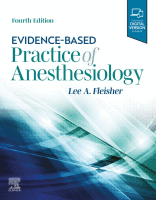Physical Address
304 North Cardinal St.
Dorchester Center, MA 02124

INTRODUCTION In 1847, only months after the first demonstration of anesthesia, James Simpson, an obstetrician, administered ether to a woman in labor for childbirth. He was quite impressed with the analgesia the new drug induced, as was his patient. Nevertheless,…

INTRODUCTION It is estimated that 0.75% to 2% of pregnant women in developed countries undergo nonobstetric surgery during the course of parturiency; approximately 42% undergo surgery in the first trimester, 35% in the second, and 23% in the third trimester.…

INTRODUCTION Despite advances in equipment and regional anesthetic techniques, postdural puncture headache (PDPH) remains a persistent problem. In some cases, the headache is mild in intensity and brief in duration, without significant sequelae; however, this is not always the case.…

INTRODUCTION The combined spinal–epidural (CSE) technique produces reliable and rapid onset of spinal anesthesia combined with the flexibility to extend the height and duration of a block provided by continuous epidural anesthesia. CSE has become a popular technique in both…

INTRODUCTION The 2018 cesarean delivery rate in the United States was 31.9%, down slightly from its peak in 2009 of 32.9%. The most common indications for cesarean delivery include prior cesarean delivery, labor dystocia, abnormal/indeterminate fetal heart rate tracings, fetal…

INTRODUCTION Neurologic injury from surgery results in substantial increased morbidity, mortality, and cost. More importantly, it is devastating to patients and their families. Thus techniques to lessen, reverse, and even avoid neurologic injury are very valuable. Neurologic intraoperative electrophysiologic monitoring…

INTRODUCTION Venous thromboembolism (VTE) is a major public health issue. VTE remains one of the main causes of mortality. It is also associated with considerable morbidity because nonfatal pulmonary embolism (PE) and deep vein thrombosis (DVT) induce short- and long-term…

INTRODUCTION Perioperative peripheral nerve injury is a significant source of morbidity for patients, and the second most frequent cause of professional liability for anesthesiologists, accounting for 12% of general anesthesia malpractice claims since 1990 according to the Anesthesia Closed Claims…

INTRODUCTION Delirium after surgery is an increasing concern for older adults, caregivers, and health care providers. Approximately 37% of all surgical procedures are performed on patients over the age of 65 years in Western countries. In the United States, this…

INTRODUCTION Despite recent advances in anesthesia techniques and monitoring measures, intraoperative and postoperative neurologic events remain the most devastating complications that continue to concern anesthesia providers. Even without any significant intraoperative events, there is a considerable risk for cerebral ischemia…